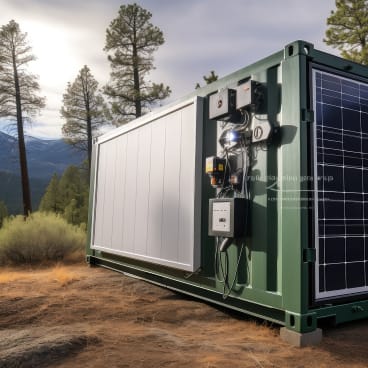Grid Forming Intro
A few aspects about grid forming.

About grid forming
Grid-forming refers to the ability of an energy resource, such as a Battery Energy Storage System (BESS) or inverter-based resource, to establish and control the voltage and frequency of a grid or microgrid. Unlike conventional grid-following resources, which depend on an existing grid frequency and voltage to synchronize their output, grid-forming resources take on a more active role in stabilizing and controlling these parameters, especially useful in low-inertia systems with high renewable penetration.
..

A short introduction about grid forming
The increasing penetration of renewable energy sources like solar and wind power has significantly altered the landscape of modern power grids. These sources, primarily based on power electronics, lack the inherent inertia and synchronous characteristics of traditional fossil fuel-based generation. This lack of inertia, which traditionally provided stability and resilience to the grid, poses significant challenges to grid stability and reliability. Grid-forming inverters emerge as a crucial technology to address these challenges and enable a more resilient and sustainable grid.
Traditional Grid Operation and Challenges
Historically, the stability of the electrical grid has been largely dependent on synchronous generators, such as those in coal and gas power plants. These generators possess inherent inertia, which helps to maintain grid frequency and voltage stability during disturbances. However, the increasing integration of inverter-based resources, which lack this inherent inertia, can lead to:
- Frequency Instability: Fluctuations in renewable energy generation can cause fluctuations in grid frequency, leading to potential instability and disruptions to power supply.
- Voltage Stability Issues: The lack of inertia can also impact voltage stability, particularly during grid disturbances.
- Reduced Grid Resilience: The grid becomes more susceptible to disturbances and may have difficulty recovering from events like sudden load changes or faults.
Grid Forming Inverters: A Solution
Grid-forming inverters are designed to address these challenges by emulating the behavior of synchronous generators. They can:
- Provide Inertia: By incorporating virtual inertia control algorithms, grid-forming inverters can mimic the behavior of rotating masses, providing synthetic inertia to the grid. This helps to stabilize grid frequency during disturbances.
- Regulate Voltage and Frequency: Grid-forming inverters can actively control voltage and frequency, ensuring grid stability and maintaining power quality.
- Improve Grid Resilience: By enhancing grid stability and providing ancillary services, grid-forming inverters contribute to a more resilient and reliable grid.
Key Technologies and Control Strategies:
- Droop Control: This is a widely used control strategy that regulates voltage and frequency based on the deviation of the inverter’s output from the desired setpoint.
- Virtual Synchronous Machine (VSM) Control: This approach emulates the behavior of a synchronous machine more closely, providing more accurate inertia and frequency response.
- Hierarchical Control: This involves a multi-layer control system that coordinates the operation of multiple grid-forming inverters across the grid.
Benefits of Grid Forming Inverters:
Improved Grid Stability and Resilience: Enhanced frequency and voltage stability, improved fault ride-through capability.
- Increased Renewable Energy Integration: Enables higher penetration levels of renewable energy sources while maintaining grid stability.
- Enhanced Grid Flexibility: Enables the grid to adapt more readily to changing operating conditions and accommodate future grid modernization initiatives.
Conclusion
Grid-forming inverters represent a critical technology for the future of the power grid. By enabling greater integration of renewable energy sources while maintaining grid stability and reliability, they play a vital role in the transition to a more sustainable and resilient energy system. Continued research and development in this area are crucial to address the evolving challenges of modern power grids and ensure a secure and reliable energy supply for future generations.
